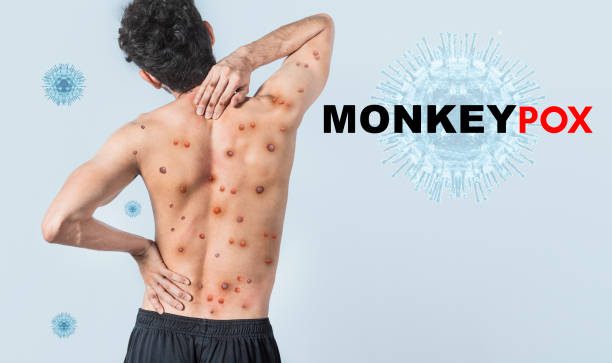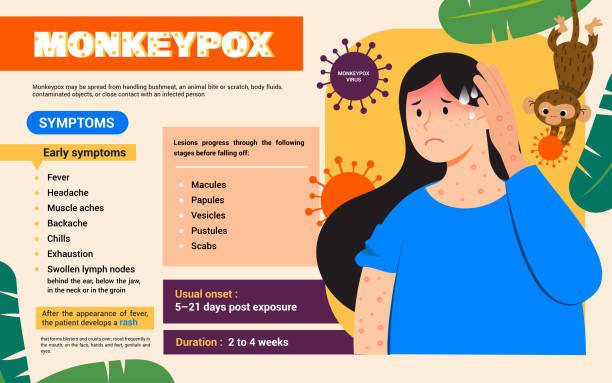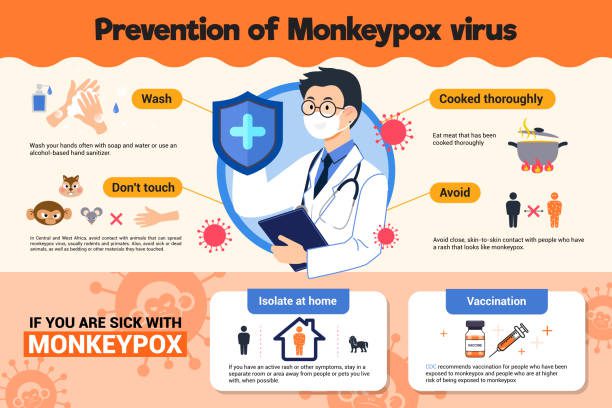It’s a bit of good news for Californians trying to beat the monkeypox cases in California dreaded virus. The state of California recently announced that cases of COVID-19 have dropped dramatically in Southern California and the Central Coast. Officials believe this is due to vaccinations and better hygiene and surveillance measures. With this, residents can take comfort in knowing that we still have a chance to avoid a deadly disease if we cooperate and follow safety precautions. But how good is this news? Let’s take a look at what was said and done over the past few days…
Los Angeles County officials have launched centers around the city offering free vaccinations for anyone with chronic conditions who cannot safely travel out of their county due to local restrictions. You can find locations here.
Monkeypox Cases In California- registration Of Vaccinations For Children And Families
Children and families can register to get vaccinated here and see if your community can give your child a life-saving shot. Parents should consider asking the hospital or clinic where their child is being cared for to make sure they can give vaccinations to children under 18.
Since its discovery in the late 19th century, monkeypox has been a highly contagious skin disease affecting humans, other primates, animals, and even rabbits. Monkeypox is contagious from person to person and can be transmitted by direct contact with the skin or air of an infected patient, through contaminated clothing, or by sneezing from an infected individual. Viral infection most often occurs in childhood but can also affect adults.
Symptoms Of Monkeypox Virus

Symptoms of monkeypox include high fever, malaise, headache, sore throat, muscle aches, and rash. Symptoms may appear several weeks after the actual infection has become apparent. People with underlying chronic diseases such as diabetes, asthma, heart disease, and epilepsy are at increased risk of contracting the virus.
Monkeypox is found in five states, including Arizona, California, Florida, Idaho, and Montana. The monkeys are found throughout the Sierra Nevada Mountains of California and can also be seen along the California coast in Sacramento County and Sonoma County. It was first named “California cow disease” before being officially recognized as a separate entity in 1967.
Monkeypox is usually treated in two ways
The first is the antiviral drugs which mean most people who get COVID-19 will develop allergies to drugs or alcohol by the time they’re diagnosed — yet the CDC hasn’t even issued any official recommendations for when to consider stopping. taking certain medicines, etc. We need to encourage people as soon as possible to do everything possible to prevent the spread of COVID-19. These simple steps could prevent more cases and deaths directly related to the infectious agent that causes them, called Sarg chloroquine, which has been shown to reduce the severity of symptoms in most cases.
Second, and more often than not, the second treatment is the steroid oral immunosuppressant budesonide, given by infusion. Budesonide is administered in liquid form, intravitreally or extrapenially, and is given by injection into the eye. Budesonide is a synthetic steroid with powerful effects on inhibiting viral replication in human cells, preventing the spread of diseases such as HIV/AIDS and influenza.
The researchers were able to determine the mechanism behind Budsonside’s ability to reverse Sars-CoV-2 by showing that it disrupts cellular communication and interferes with many cellular processes important in triggering inflammation and cell death. Disruption of cellular communication causes inflammation, so budesonide stimulates the immune response to fight disease-causing bacteria and viruses that lead to inflammation and disease symptoms in people who develop them.
Monkeypox is now considered endemic again in California as far as health is concerned.
Even with all of this happening, we still need to take precautions to protect ourselves and others from COVID-19. We cannot be complacent about the measures that can help us prevent the spread of COVID-19. To protect yourself, your family, friends, and relatives, it is vital that everyone follows good hygiene practices, such as washing their hands frequently and avoiding sharing personal items they may be carrying. Also, remember that not having social interaction is the worst way to spread the word about potential contact with someone with COVID-19.
Especially when there are many places to isolate and more people are coming into contact with each other than we should. Stay at home whenever possible and always wear a mask when leaving the house – especially outside of public places. You can also wash your hands thoroughly before entering any building to prevent transmission to anyone else who may enter. If people think they have contracted the virus from another person or family member, get tested immediately and self-isolate, and call 911.
There are many online resources that you can go to for information on how to identify the symptoms and possible risks of contracting the virus. The Centers for Disease Control and Prevention recommends that individuals without symptoms of the virus and those who test negative continue to self-isolate. They recommend that people wear masks when talking to family or friends, and stay away from sick people if they are unwell.
Most importantly, people should not gather in groups if they know someone who has infected their contact with the virus, as this increases the risk of its further spread. Remember to follow the rules and guidelines to protect yourself and others from COVID-19 and never let your guard down until we have the next vaccine.
Monkeypox cases fall in California in 2022
As the annual fall vaccine rollout approaches and healthcare facilities see more cases than usual this year, California remains at high risk for another round of COVID-19-related surges due to ongoing outbreaks in overcrowded hospitals, overcrowded clinics, and nursing homes.

Between December 16 and November 20, a total of 12,923 cases (1,098) were reported in California, with 7,462 of those involving residents who were hospitalized or died from the virus (1,534). That means nearly 40% of California’s cases occurred during the same period. While numbers have been falling statewide in recent weeks, they remain higher than last quarter due to continued clusters in nursing homes, jails, and prisons.
Most Infected Counties With Monkeypox
The top five counties with the most infections per 100,000 people in the last 14 days are Lassen County with 4.3 cases per 100,000 (San Diego County with 4.2 cases per 100,000, San Francisco with 3.8 cases per 100,000, Los Angeles with 2.9 cases per 100,000 cases, and Sacramento 2 cases per 100,000).
California’s seven-day average, which measures the number of new cases per day compared to previous averages, is also significantly higher than a week ago: 1,049 cases per day. This is a significant increase compared to the first two weeks of November when there were just 6,124 new cases per day.
The number of deaths is also still rising, but not as steeply. Three counties have seen more deaths per person in the past 14 days, including Kern County, which ranks second in the county with 2,074 deaths per 100,000 residents (1,186 for Napa County). However, there are still large counties with at least 3,000 deaths per 100,000 residents:
Alameda County, Riverside County, Marin County, Santa Clara County, and San Mateo County. Across the country, there has also been an increase in the number of healthcare workers infected with the coronavirus: In counties where doctors have been hit particularly hard by the spread of the new coronavirus — such as Merced in 2018 and Imperial in 2019 — hospitalizations are occurring. now also rising.
Overall, California is currently experiencing an alarming
The trend for the state is in early December as hospitals continue to fill and healthcare providers struggle with overwhelming demand. Current daily case numbers have reached unprecedented levels in some regions, such as the Bay Area and Southern California’s Central Coast region. Overall, these areas still rank among the states with the lowest capacity.
Late last month, federal data showed that while there are no longer any confirmed cases leading to death nationwide, approximately 50,000 Americans could test positive for the virus through January 2021. So while California may see its restrictions eased, all social distancing and masking recommendations must still be followed to help limit disease transmission as hospitals continue to be strained by the stress of pandemic patients.

Meanwhile, California is pushing for vaccine distribution. On Dec. 22, Gov. Gavin Newsom signed emergency orders directing the state Department of Public Health to distribute vaccines — allowing millions more Californians to return to their lives as usual. While we should still follow guidelines and avoid crowds during this holiday season, please take advantage of these opportunities if you can! Wear a mask, practice social distancing and follow other safety tips to protect yourself and others.
If you would like to support our local public health department, please consider donating here and purchasing fresh fruit and vegetables. We appreciate everyone for their continued efforts to keep this country safe
California has a significant decrease in monkeypox cases
As of May 1, 2021, California is reporting a significant decrease in monkeypox cases compared to previous years. As of 10 December 2020, it had 8,038 cases 2020 and now reports an average of 6,744 cases per day. That’s up from the 5,904 cases reported in 2019, but also down from 2020’s record 9,744 cases. The last time the state saw an even lower number of cases was in 1988 when just 2,732 people were infected. State officials say about half of those infected are children aged 0-6 months, and people under the age of 18 make up only 6% of all cases.
The case data also shows a higher number of new infections than in 2020 – about 300 more cases in the past two weeks for every 100,000 people compared to last year. That’s about 40 more cases per 100,000 people. At this point, the average number of new cases reported in California each week is now over 3,000 per day. In the same period, hospitalizations for childhood diseases also decrease. For example, the number of pediatric intensive care unit admissions nationally reached about 120 per 100,000 people in November 2020 but has since fallen by more than 50% in 2021.
Hospital admissions fell by 45% in August of this year, although the number remains around 120 per 100,000 people. While these numbers are declining, health disparities persist among blacks, browns, whites, and other minorities, who account for 44% of the population but only 25% of all hospitalizations or deaths. Children who are poor, Hispanic, or Native American make up 30% of all cases, but only 19% are sick enough to be hospitalized, and 26% of them have died in the past two years. Of those hospitalized in 2021, 75% were from the racial/ethnic groups most affected by the pandemic.
Monkey Pox Symptoms and Treatment
Monkeypox (varicella-zoster virus) can infect anyone. Those who contract the disease experience symptoms including fever, pain, rash, or inflammation in the area where the infection occurred. When symptoms appear, antibiotics are prescribed along with other drugs to suppress viral replication. It takes 12 to 13 days for symptoms to appear, and treatment begins when symptoms worsen. Antiviral treatment could be given during this time. If left untreated, the virus can cause life-threatening complications including death and paralysis, especially in young children.
Monkeys vaccination against VZV

After symptoms resolve without intervention, immunity develops within 2-4 weeks of infection with the virus. Monkeys vaccinated against VZV develop resistance to their natural human hosts, but never to the viruses that cause chickenpox. Vaccinated monkeys can be treated with antibodies or immunoglobulin therapy to protect them from re-infection. Antiviral drugs take several weeks to work before they become effective, but they usually remain effective even if a person does not develop immunity.
The vaccine called varicella (chicken)-zoster (chicken) protects against infection by strains of monkeypox and other viruses such as Chagas disease virus (CDCV), yellow fever virus, rabies virus, Japanese encephalitis virus, Nipah virus, West Nile virus, poliovirus and rubella virus. Although they are not completely effective against COVID-19, they cover a wide range of diseases caused by different animal viruses. According to the CDC, up to 99.5% of children will not need antibiotics in the first year after vaccination. Vaccines are also safe and well-tolerated.
How monkeys can protect themselves from infection with mumps and smallpox
In early 2020, a strain of the measles virus called B1351 emerged and spread domestically in California, now infecting 96.1% of the city and surrounding areas in the greater Sacramento area due to travel. Despite this, many California parents and guardians did not want their children vaccinated against the virus in 2020 due to concerns about possible exposure and risk of transmission.
In response to concerns expressed by public health experts, California has taken several measures to encourage residents with an unvaccinated parent or guardian to seek medical attention and guidance on how to safely vaccinate their children if they are exposed to the virus.
Vaccination Services And Providing Vaccination Information Online
These include offering vaccination services, providing vaccination information online, and phone messaging in English and Spanish about vaccination methods. Since March, the state has offered free testing for infants and preschoolers who have been exposed to someone with COVID-19. In addition, people are advised to get tested for flu-like symptoms, such as fever or cough, within a week of developing symptoms so that colds can determine whether they need the H1N2 vaccine.
Individuals with a severe fever lasting more than a few hours may be tested while symptoms persist or for more extensive tests for other diseases such as RSV or HIV if they do not receive recommended testing or treatment within 48 hours of the onset of symptoms.
Safety precautions

People who are concerned about possible contact can sign up for notifications that indicate people may have been exposed to COVID-19 via email, text, or call. Parents and caregivers must take precautions such as wearing masks, social distancing, and hand washing. To further mitigate the potential outbreak, counties can limit outdoor gatherings to a maximum of 10 and indoor gatherings to a maximum of 20-25 people.
People can schedule a vaccination appointment through www.covid19.ca.gov, which provides information on local resources to help individuals find vaccination sites and access information about available vaccines.
